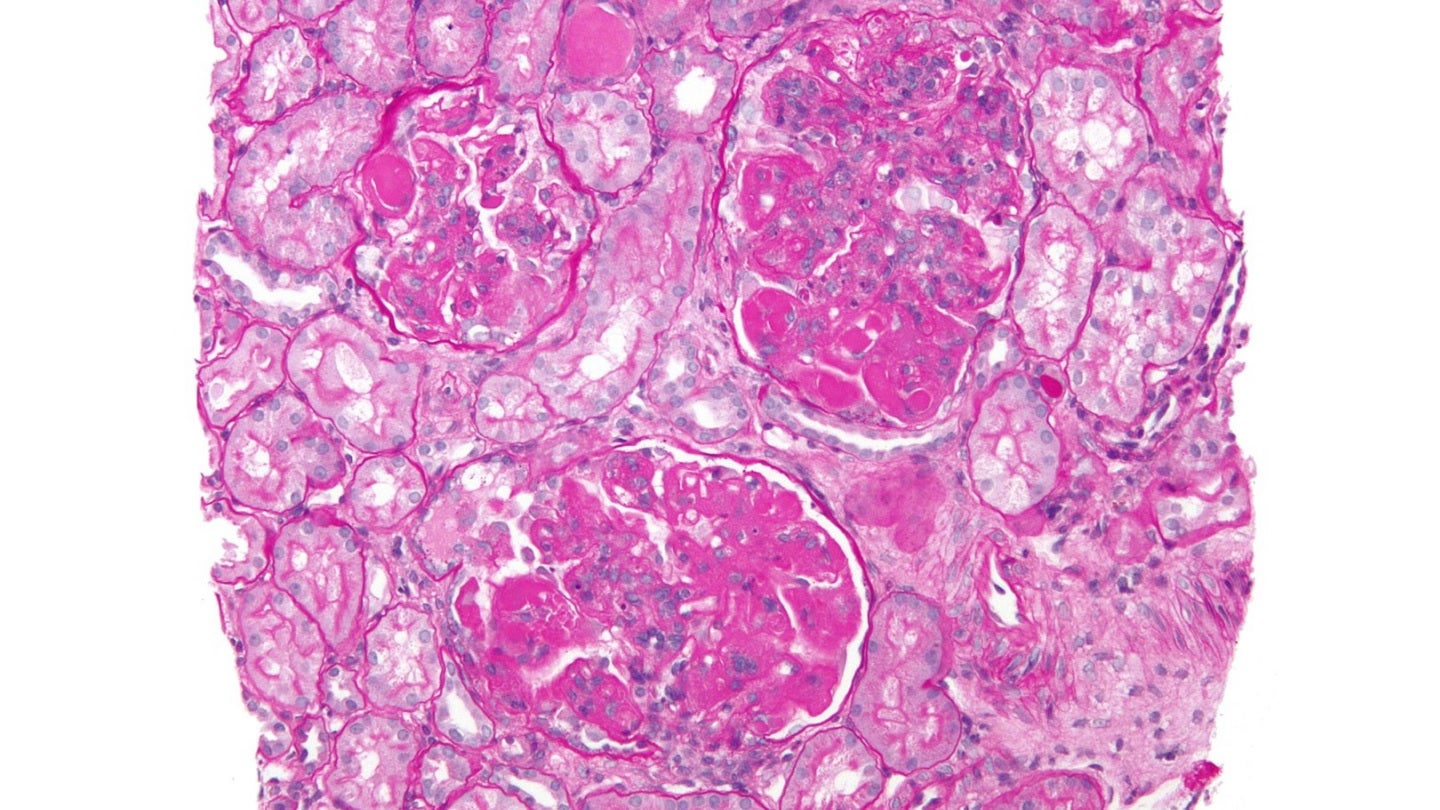更新于:2024-11-01
Gut hormone analogue(Imperial College London)
更新于:2024-11-01
概要
基本信息
在研机构- |
最高研发阶段无进展临床1期 |
首次获批日期- |
最高研发阶段(中国)- |
特殊审评- |
登录后查看时间轴
关联
2
项与 Gut hormone analogue(Imperial College London) 相关的临床试验A randomised, placebo controlled study to investigate the safety, tolerability, pharmacokinetics and pharmacodynamics of an Oxyntomodulin analogue (G3215) delivered via a subcutaneous infusion in adult subjects
开始日期2020-11-02 |
申办/合作机构 |
A Randomised, Placebo Controlled Study to Investigate the Safety, Tolerability, Pharmacokinetics and Pharmacodynamics of the Gut Hormone Analogue G3215 in Adult Subjects
A randomised, placebo controlled Phase I study to investigate the safety, tolerability, pharmacokinetics and pharmacodynamics of G3215 in adult subjects.
开始日期2015-01-01 |
申办/合作机构 |
100 项与 Gut hormone analogue(Imperial College London) 相关的临床结果
登录后查看更多信息
100 项与 Gut hormone analogue(Imperial College London) 相关的转化医学
登录后查看更多信息
100 项与 Gut hormone analogue(Imperial College London) 相关的专利(医药)
登录后查看更多信息
28
项与 Gut hormone analogue(Imperial College London) 相关的文献(医药)2024-10-01·ENDOCRINE RESEARCH
Additional considerations in cancer cell radioresistance, integrin αvβ3 and thyroid hormones
Article
作者: Davis, Paul J. ; Lin, Hung-Yun ; Hercbergs, Aleck ; Mousa, Shaker A. ; Glinsky, Gennadi V.
BACKGROUND:
The existence of a functional relationship between a certain thyroid hormone analogue and cancer cell radioresistance has been shown by Leith and coworkers. The hormone analogue with relevance to malignant cells' radioresistance is tetraiodothyroacetic acid (tetrac). Tetrac is the deaminated derivative of L-thyroxine (T4), the principal product of the thyroid gland. Preclinical studies demonstrated that tetrac and chemically modified tetrac (CMT), e.g. a fluorobenzyl-conjugated tetrac analogue, restores radiosensitivity in certain radioresistant tumor cells. Due to their molecular, physico-chemical, and biological properties, actions of CMT analogues are believed to be initiated at the thyroid hormone analogue receptor site on plasma membrane integrin αvβ3.
OBJECTIVE:
To explore possible molecular mechanisms of the potentially therapeutically beneficial effect of CMT on cancer cells' sensitivity to radiation, we analyzed actions of CMT analogues on expression of selected sets of genes that have been previously implicated in radioresistance of malignant cells.
DISCUSSION AND CONCLUSIONS:
In the current study, we report that genome-wide gene expression profiling analysis of human glioblastoma (GBM) and acute myelocytic leukemia (AML) cell lines exposed in vitro to noncytotoxic doses of CMT has identified decreased expression of discrete trios of genes each of which was previously linked to cancer cells' radioresistance. Following the CMT treatment in AML cells, expression of PARP9, PARP15 and STAT3 genes was significantly reduced, while in GBM cells, expression of PRKDC, EGFR and CCNDI was significantly decreased by the drug. Notably, a broader spectrum of genes implicated in cancer cells' radioresistance was observed in primary patient-derived GBM cells after the CMT treatment. Extensive additional experimental and clinical studies are indicated, including analyses of individual patient tumor genomics and of an array of different tumor types to define the sub-sets of tumors manifesting radioresistance in which tetrac-based agents may be expected to enhance therapeutic effects of radiation.
2024-07-01·Peptides
Gut hormone analogues and skeletal health in diabetes and obesity: Evidence from preclinical models
Review
作者: Mabilleau, Guillaume ; Bouvard, Béatrice
Diabetes mellitus and obesity are rapidly growing worldwide. Aside from metabolic disturbances, these two disorders also affect bone with a higher prevalence of bone fractures. In the last decade, a growing body of evidence suggested that several gut hormones, including ghrelin, gastrin, glucose-dependent insulinotropic polypeptide (GIP), glucagon, and glucagon-like peptide-1 and 2 (GLP-1 and GLP-2, respectively) may affect bone physiology. Several gut hormone analogues have been developed for the treatment of type 2 diabetes and obesity, and could represent a new alternative in the therapeutic arsenal against bone fragility. In the present review, a summary of the physiological roles of these gut hormones and their analogues is presented at the cellular level but also in several preclinical models of bone fragility disorders including type 2 diabetes mellitus, especially on bone mineral density, microarchitecture and bone material properties. The present review also summarizes the impact of GLP-1 receptor agonists approved for the treatment of type 2 diabetes mellitus and the more recent dual or triple analogue on bone physiology and strength.
2024-04-01·Diabetes, obesity & metabolism
Adaptive infusion of a glucagon‐like peptide‐1/glucagon receptor co‐agonist G3215 , in adults with overweight or obesity: Results from a phase 1 randomized clinical trial
Article
作者: Tabbakh, Yasmin ; Bloom, Stephen R ; Ansari, Saleem ; Reglinska, Beata ; Choudhury, Sirazum ; Minnion, James ; Ball, Laura-Jayne ; Malviya, Reshma ; Alexiadou, Kleopatra ; Hope, David C D ; Yang, Wei ; Lazarus, Katharine ; Davies, Iona ; Jimenez-Pacheco, Lara ; Tan, Tricia M-M ; Khoo, Bernard ; Ilesanmi, Ibiyemi
Abstract:
Aims:
To determine whether a continuous infusion of a glucagon‐like peptide receptor (GLP‐1R)/glucagon receptor (GCGR) co‐agonist, G3215 is safe and well tolerated in adults with overweight or obesity.
Methods:
A phase 1 randomized, double blind, placebo‐controlled trial of G3215 in overweight or obese participants, with or without type 2 diabetes.
Results:
Twenty‐six participants were recruited and randomized with 23 completing a 14‐day subcutaneous infusion of G3215 or placebo. The most common adverse events were nausea or vomiting, which were mild in most cases and mitigated by real‐time adjustment of drug infusion. There were no cardiovascular concerns with G3215 infusion. The pharmacokinetic characteristics were in keeping with a continuous infusion over 14 days. A least‐squares mean body weight loss of 2.39 kg was achieved with a 14‐day infusion of G3215, compared with 0.84 kg with placebo infusion (p < .05). A reduction in food consumption was also observed in participants receiving G3215 and there was no deterioration in glycaemia. An improved lipid profile was seen in G3215‐treated participants and consistent with GCGR activation, a broad reduction in circulating amino acids was seen during the infusion period.
Conclusion:
An adaptive continuous infusion of the GLP‐1/GCGR co‐agonist, G3215, is safe and well tolerated offering a unique strategy to control drug exposure. By allowing rapid, response‐directed titration, this strategy may allow for mitigation of adverse effects and afford significant weight loss within shorter time horizons than is presently possible with weekly GLP‐1R and multi‐agonists. These results support ongoing development of G3215 for the treatment of obesity and metabolic disease.
2
项与 Gut hormone analogue(Imperial College London) 相关的新闻(医药)2023-06-13
The activators might lead to the development of new therapies to treat heart failure. Credit: Ground Picture / Shutterstock.com.
The United States Patent and Trademark Office (USPTO) has
issued a notice of allowance
for Windtree Therapeutics’ patent application covering a group of SERCA2A [a key protein in the cycle of heart failure] activators with a dual mechanism.
The company stated that the family of drug candidates of SERCA2a activators has similar mechanisms of action to those of istaroxime, a first-in-class dual mechanism therapy.
Recommended Reports
Reports
LOA and PTSR Model - ISB-1442
GlobalData
Reports
LOA and PTSR Model - (semaglutide + GIP analogue)
GlobalData
View all
It might therefore lead to the development of new therapies to treat heart failure.
Dual mechanism SERCA2a activators work by inhibiting the Na+/K+ pump [an enzyme found in the membrane of all animal cells] and activating SERCA2a.
Windtree Therapeutics noted that these product candidates are intended to be both oral and IV therapies.
They might represent both an outpatient, oral therapy for chronic heart failure and hospital discharge, and an inpatient therapy for the treatment of acute decompensated heart failure.
In April 2023, the dual mechanism SERCA2a activator class of drug candidates received a
patent
from the European Patent Office.
Windtree Therapeutics CEO and president Craig Fraser stated: “We are pleased to see the continued progress of our IP portfolio strategy for the dual mechanism SERCA2a activator family of drug candidates.
“The development strategy with these dual mechanism compounds is for potential ‘fast follow-on’ drug candidates that can leverage the experience with istaroxime and provide the potential added feature of oral bioavailability for use as a treatment for chronic heart failure.
“This composition of matter patent represents a key part of our plan for these assets and we look forward to the next step in the process from the USPTO.”

2023-05-03
Lupkynis is indicated to treat active class III, IV and V (including mixed classes III/V and IV/V) lupus nephritis. Credit: Nephron / commons.wikimedia.org.
Aurinia Pharmaceuticals
has
received marketing authorisation
from the Swiss Agency for Therapeutic Products (Swissmedic) for Lupkynis (voclosporin), along with a background immunosuppressive therapy.
Lupkynis is a new structurally modified calcineurin inhibitor (CNI) indicated for the treatment of active class III, IV and V (including mixed classes III/V and IV/V) lupus nephritis (LN) in adult patients.
Recommended Reports
Reports
LOA and PTSR Model - Semaglutide Injection in Diabetes
GlobalData
Reports
LOA and PTSR Model - (Semaglutide + Gip Analogue) in Type 2 Diabetes
GlobalData
View all
With a dual mechanism of action, the therapy can act as an immunosuppressant by inhibiting the activation of T cells, as well as the production of cytokine. This promotes podocyte stability in the kidneys.
Lupkynis has also received orphan drug designation in Switzerland.
It is claimed to be the first oral medicine to receive approval from the US Food and Drug Administration and the European Commission to treat active LN in adults.
Aurinia Pharmaceuticals president and CEO Peter Greenleaf stated: “We are extremely pleased with the Swissmedic approval of Lupkynis for adults with lupus nephritis.
“This approval provides patients with an important treatment option and makes Lupkynis a more accessible therapy for patients experiencing LN.”
The regulatory authorisation is based on the Phase III AURORA 1 study and the AURORA 2 continuation trial.
Patients treated with voclosporin along with mycophenolate mofetil (MMF) and low-dose corticosteroids had statistically superior complete renal response rates at 52 weeks compared to those who received MMF and low-dose corticosteroids alone.
They also maintained a stable estimated glomerular filtration rate (eGFR) over three years.
In December 2020, Aurinia
entered a collaboration
and licensing agreement with Otsuka Pharmaceutical to develop and commercialise voclosporin for LN treatment in Iceland, the European Union, Russia, Norway, Liechtenstein, Ukraine, Switzerland, Belarus, Japan and the UK.

临床3期引进/卖出孤儿药上市批准临床结果
100 项与 Gut hormone analogue(Imperial College London) 相关的药物交易
登录后查看更多信息
研发状态
10 条进展最快的记录, 后查看更多信息
登录
| 适应症 | 最高研发状态 | 国家/地区 | 公司 | 日期 |
|---|---|---|---|---|
| 糖尿病 | 临床1期 | 英国 | 2015-01-01 | |
| 肥胖 | 临床1期 | 英国 | 2015-01-01 |
登录后查看更多信息
临床结果
临床结果
适应症
分期
评价
查看全部结果
| 研究 | 分期 | 人群特征 | 评价人数 | 分组 | 结果 | 评价 | 发布日期 |
|---|
No Data | |||||||
登录后查看更多信息
转化医学
使用我们的转化医学数据加速您的研究。
登录
或

药物交易
使用我们的药物交易数据加速您的研究。
登录
或

核心专利
使用我们的核心专利数据促进您的研究。
登录
或

临床分析
紧跟全球注册中心的最新临床试验。
登录
或

批准
利用最新的监管批准信息加速您的研究。
登录
或

特殊审评
只需点击几下即可了解关键药物信息。
登录
或

标准版
¥16800
元/账号/年
新药情报库 | 省钱又好用!
立即使用
来和芽仔聊天吧
立即开始免费试用!
智慧芽新药情报库是智慧芽专为生命科学人士构建的基于AI的创新药情报平台,助您全方位提升您的研发与决策效率。
立即开始数据试用!
智慧芽新药库数据也通过智慧芽数据服务平台,以API或者数据包形式对外开放,助您更加充分利用智慧芽新药情报信息。
生物序列数据库
生物药研发创新
免费使用
化学结构数据库
小分子化药研发创新
免费使用

